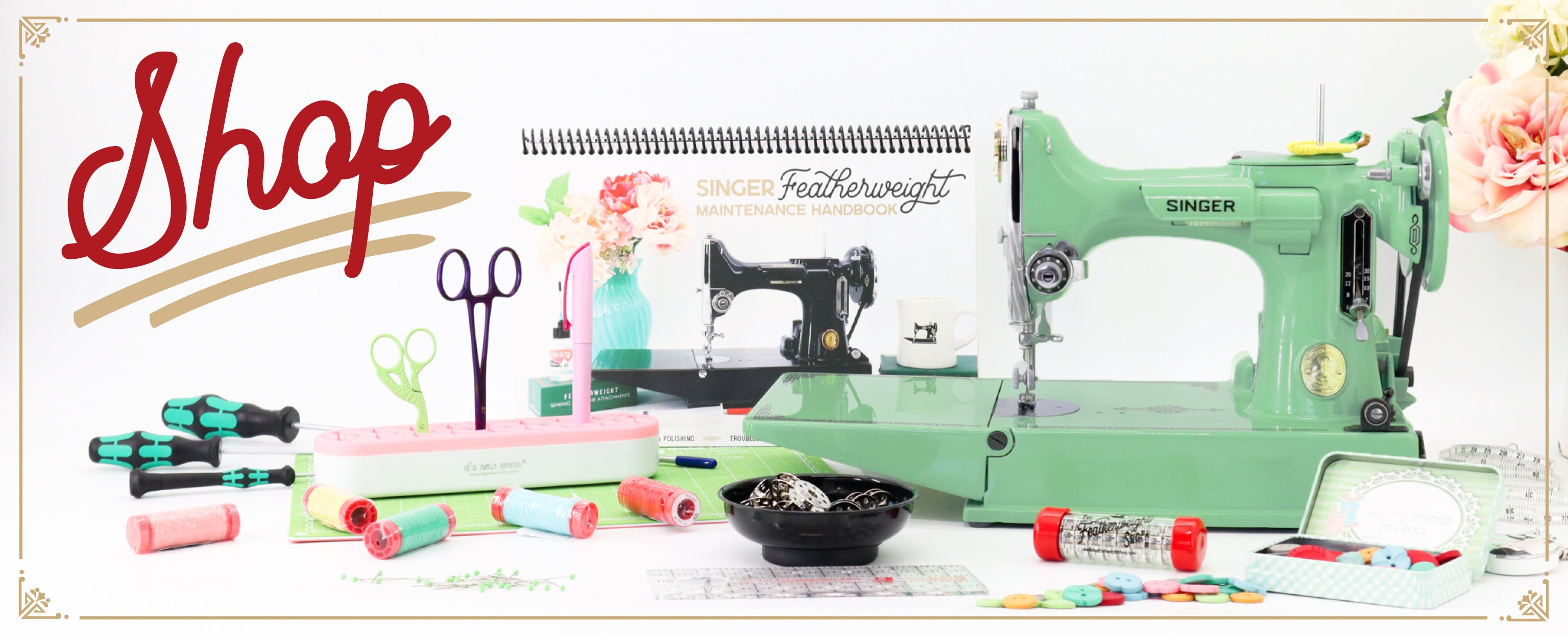Singer Featherweight
Schoolhouse
Categories
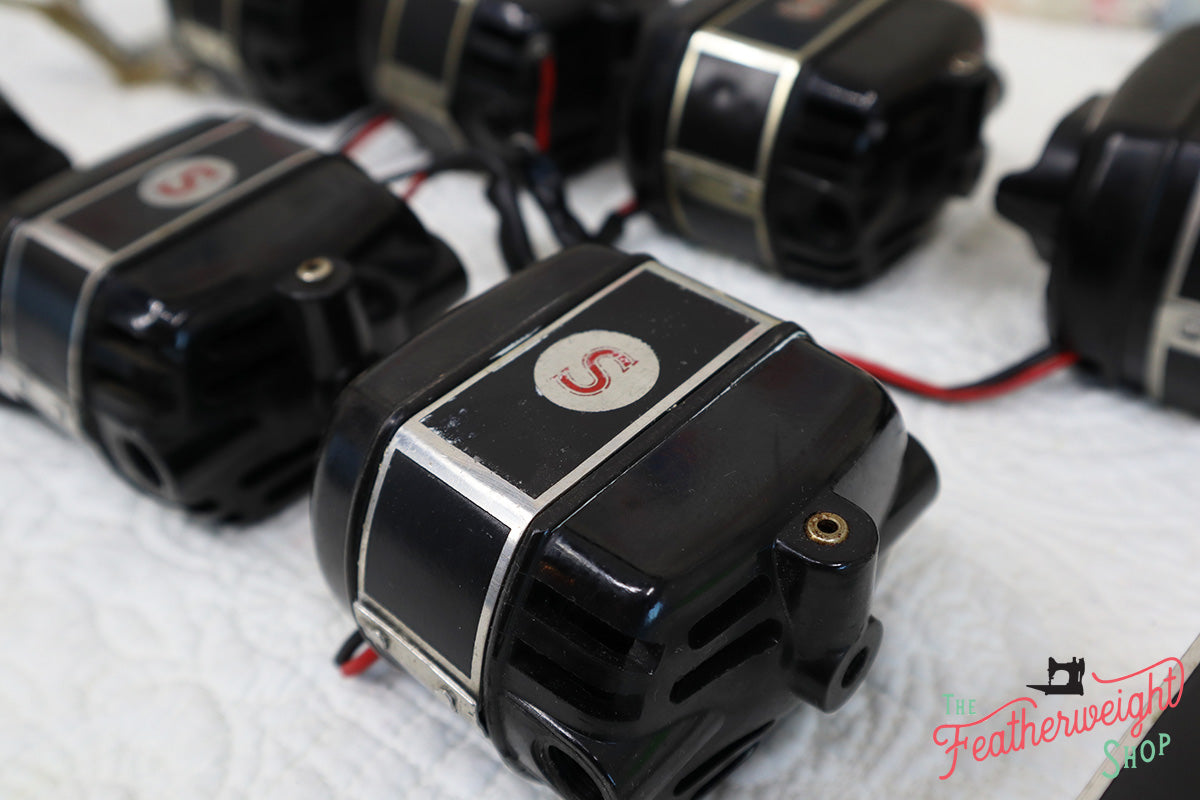
A Timeline of The Featherweight Motor
The Motor is one of the most vital parts on the Singer Featherweight. It is likely to be the first part to display signs of age on almost any machine, so it is important that the motors are properly cared for. When a motor does wear out, it can be replaced by any original Featherweight motor. ...
Read More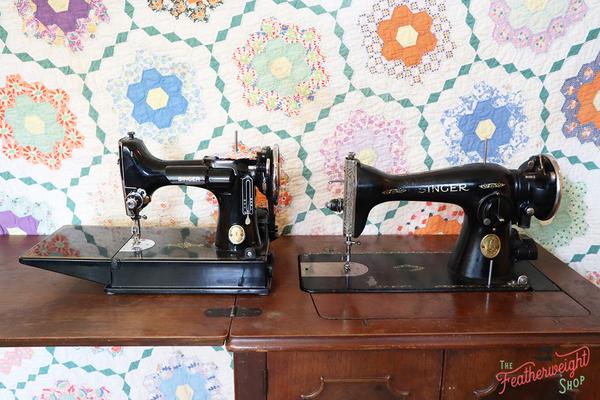
How Does The Featherweight Compare to Other Singer Machines?
When Singer introduced the Featherweight in 1933 it was vastly different from most all sewing machines on the market. This article will compare the Featherweight to the other common Singer machines of its era. First, to be considered an actual Singer "Featherweight", the sewing machine must ...
Read More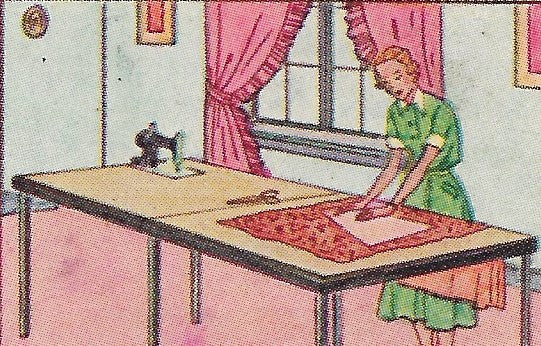
Original Featherweight Tables and Cabinets
Singer tables were what any 1940s homemaker would have wanted to accompany her machine: an adaptable table for sewing or hosting! Below is a cute ad from Singer, marketing the different ways one of their tables could be used... Pinochle anyone? Today, some of the most collectible sewing machin...
Read More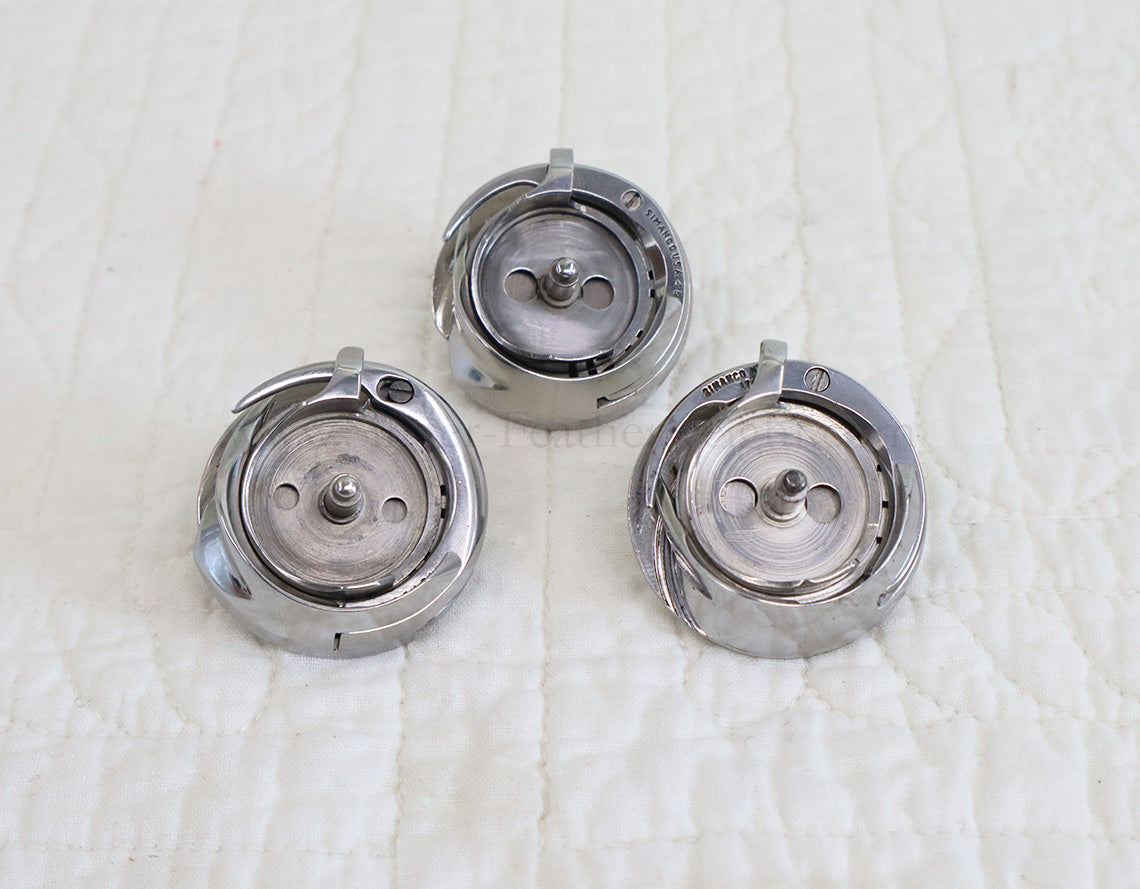
A Complete Guide to the Variations of Featherweight Hook Assemblies
The hook assembly can be considered the heart of your machine, crucial for timing and stitch formation. Singer did update the design of the hook assembly a few times over the years, and the precision engineering involved means these parts are not interchangeable. This guide is not only a historic...
Read More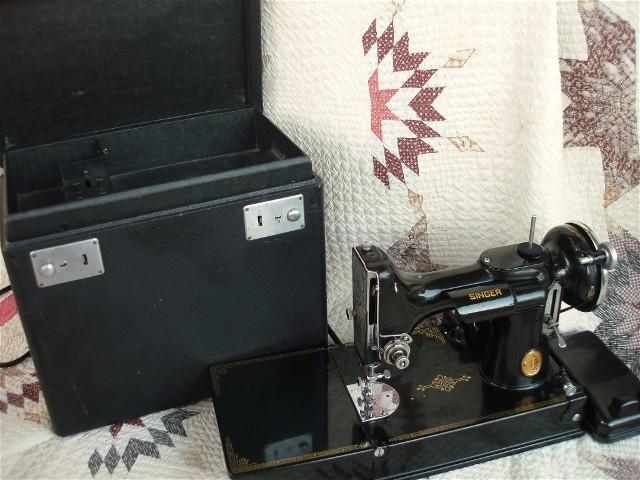
A Concise History of the Featherweight Case
For Singer, the number one selling point for the Featherweight was its portability with the lightweight design of the machine unique and desirable. For the Singer Featherweight to truly be portable, however, it also had to have a lightweight and compact case - one that would hold the machine, co...
Read More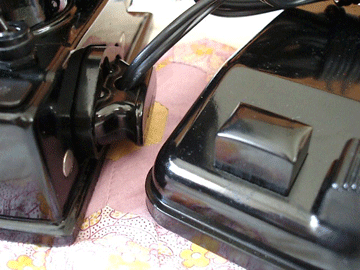
Original Featherweight Foot Controller History and Timeline
Singer made a variety of foot controllers over the years, and a few different styles for the Featherweight. All vintage original Featherweight foot controllers are universal and can work with 110 or 220 voltage and with any Featherweight model whether 221 or 222 (the actual plug to the machine m...
Read More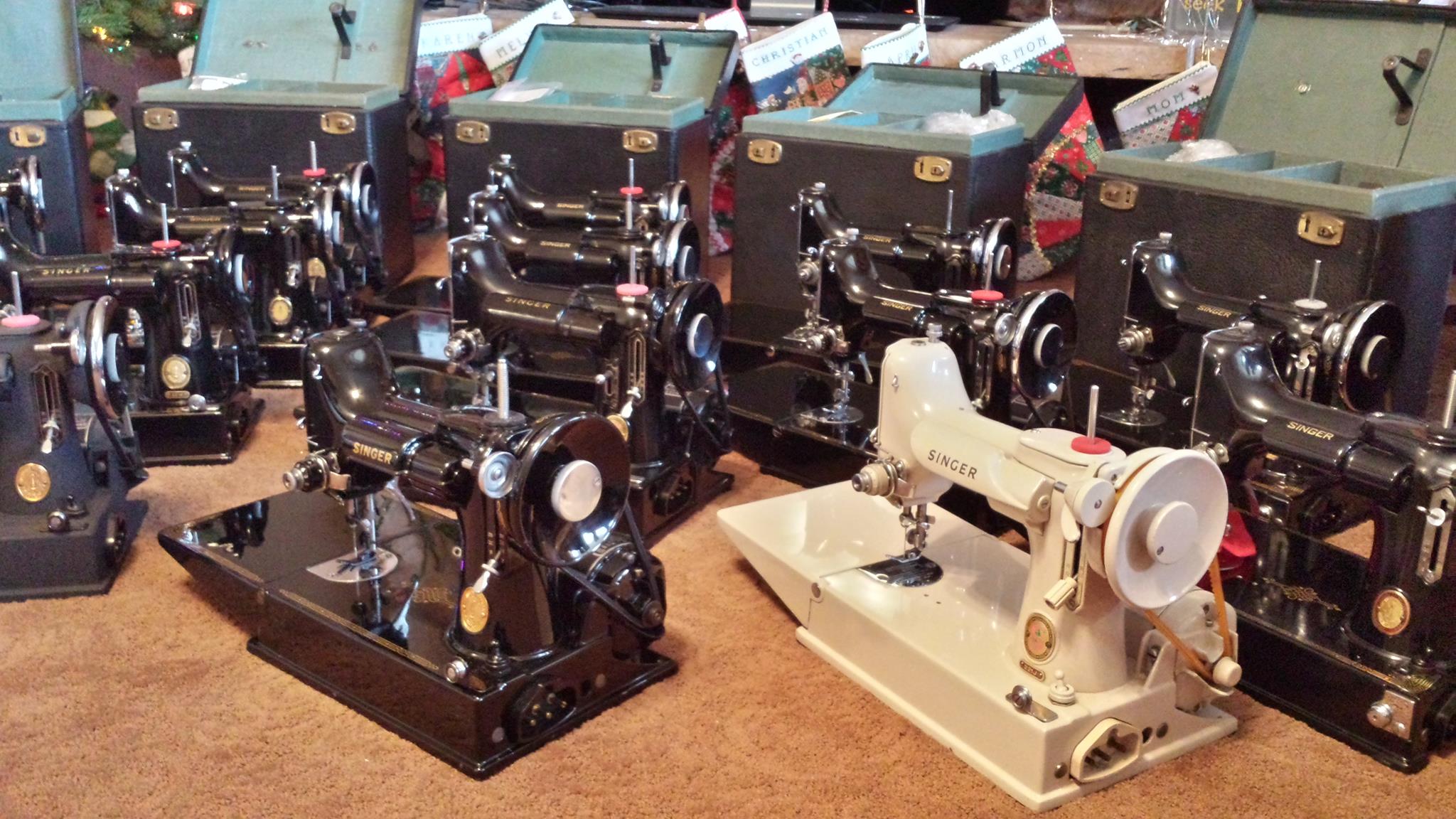
A Featherweight Comparison Guide - Specifics of Each Featherweight 221
Are Some 221 Featherweights Better Than Others? A common question we receive here in the shop is, "Are some Featherweights better than others?" It is a great question and one that we are always verbose to answer! While a Featherweight is a Featherweight is a Featherweight, there were many chang...
Read More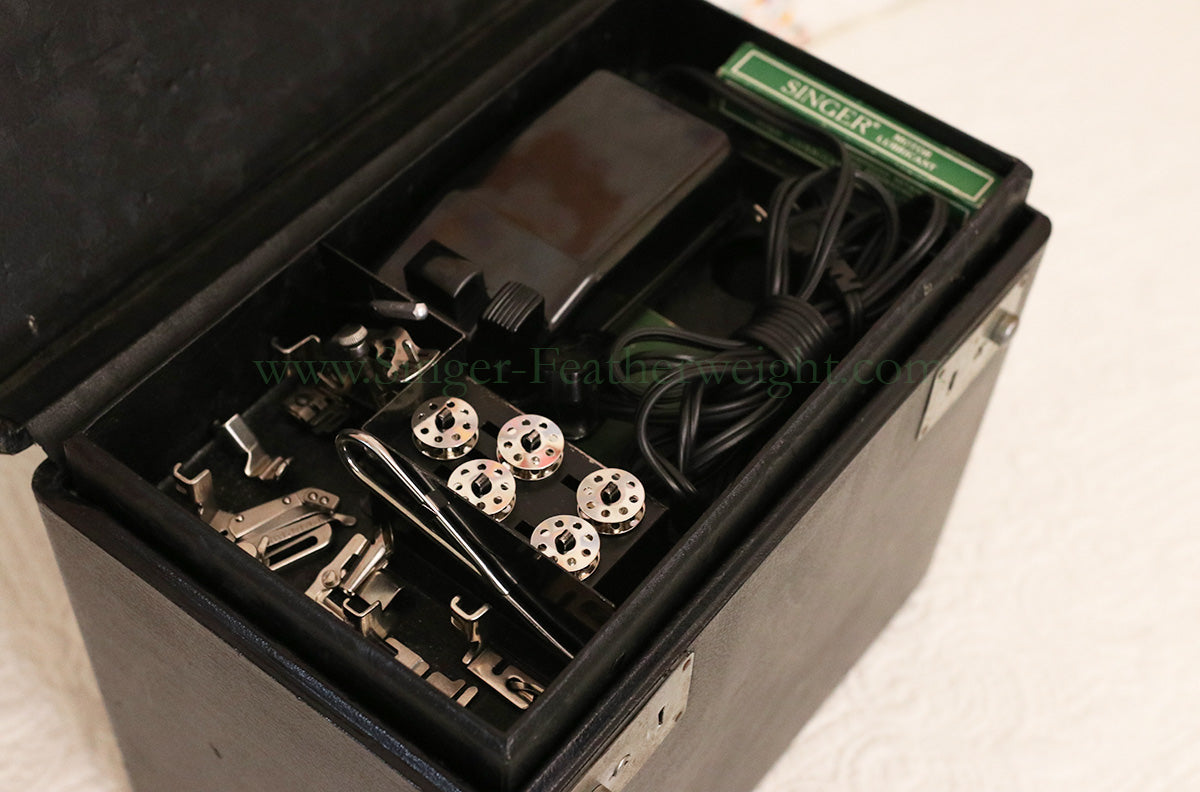
How to Pack up the Featherweight and its Accessories in the Case
One question that we get quite often here in the shop is, "how does everything fit in my Featherweight case?" Singer did change the Featherweight cases throughout the years, so packing everything up wasn't always the same. You might be able to get it all in the Case if you pile it in all random...
Read More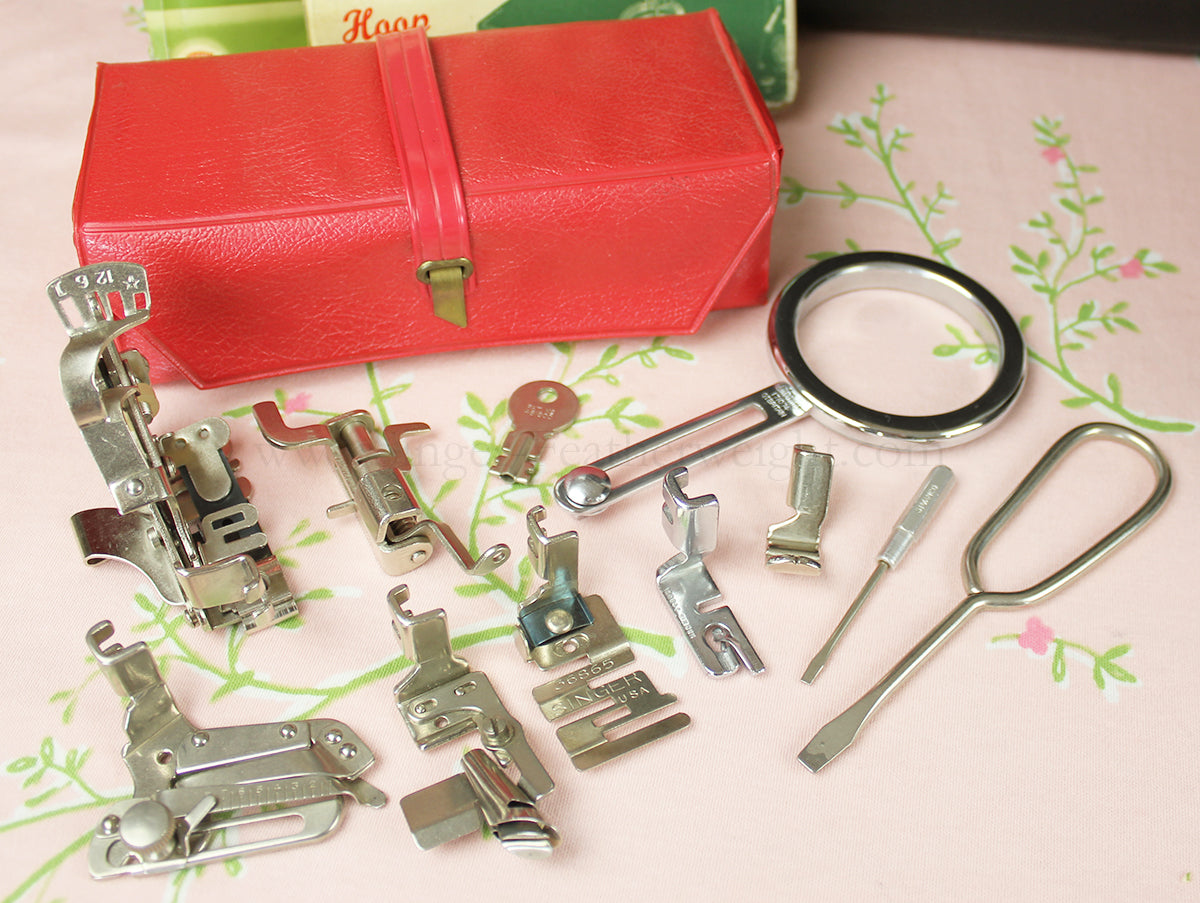
What accessories originally came with my Featherweight?
The Featherweight is like many other vintage and collectible items; having all the original accessories makes the item more desirable and possibly even more valuable. The question then must be asked, "Do I have all my original accessories?" We know the machine would have originally included a f...
Read More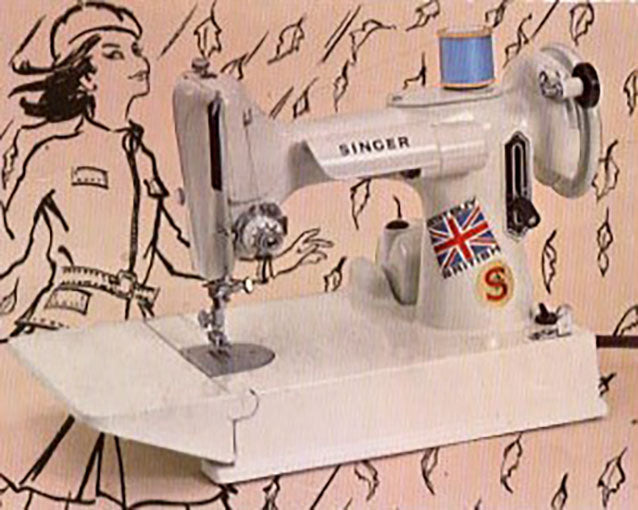
Featherweights From Foreign Countries
I am sure there are some of you who have found peculiar things on your machine or among the accessories. While Featherweights were only produced in three countries (USA, UK & Canada), they were sold worldwide. Singer often added decals, logos and extra accessories with machines sold in di...
Read More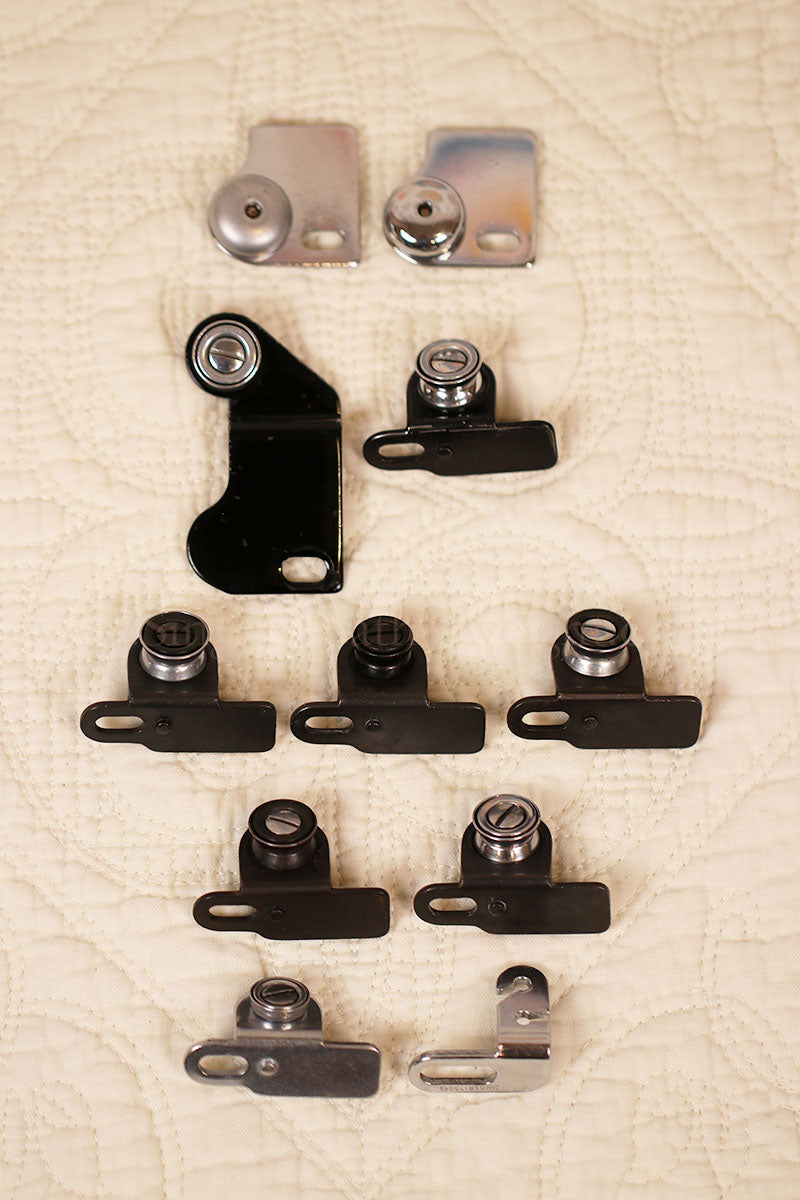
A Concise History and Timeline of the Featherweight Bobbin Winder Tension Unit
In the photo below you will see 11 bobbin winder tension units. You can probably see how each one is different, but the question is...are they really all that different? Singer made approximately six standard unique units. Most of the differences that can be seen in the photo are just a diffe...
Read More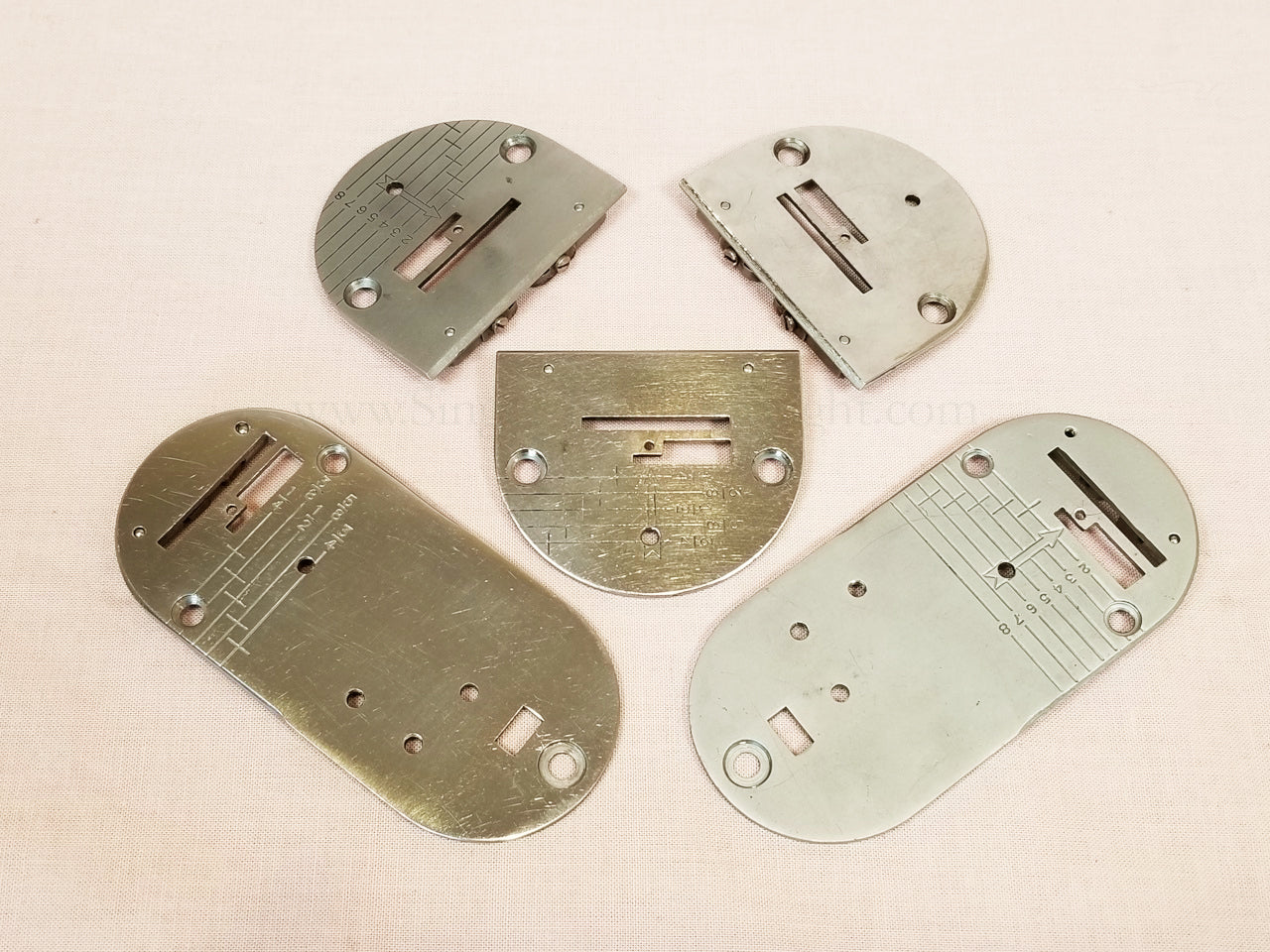
A Timeline History of the Singer Featherweight Needle Plate
The Featherweight Needle Throat plate is a valuable piece made with extreme precision. It may seem like just a stationary part, but it must be able to allow the needle to pass through smoothly, the feed dogs to move without rubbing, and the thread to be pulled up through a tight slot. It must b...
Read More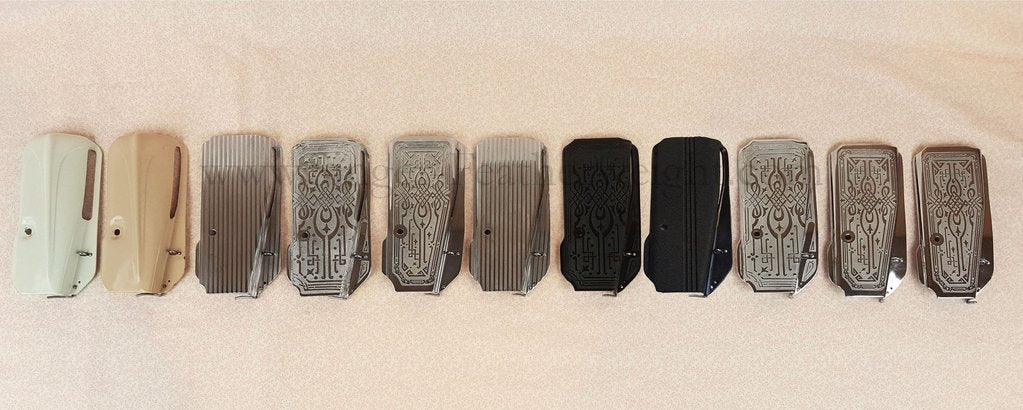
A Timeline History of the Singer Featherweight Faceplate
I'm sure many of you have seen the decorative scrolled Featherweight faceplates, and one very common question we get here in the Featherweight Shop is, "Can I exchange my striated faceplate for the decorative scrolled one?" The answer is: If you're not a purist and originality is not important, ...
Read MoreIs My Featherweight a Blackside?
Blackside Featherweights were made in 1941 and 1945, but I'm sure you've noticed some other Featherweights that had some blackside parts, too. There were parts like thumb screws and bobbin winders that were made with blackside finish, but do these parts indicate that the machine is a true Blacksi...
Read More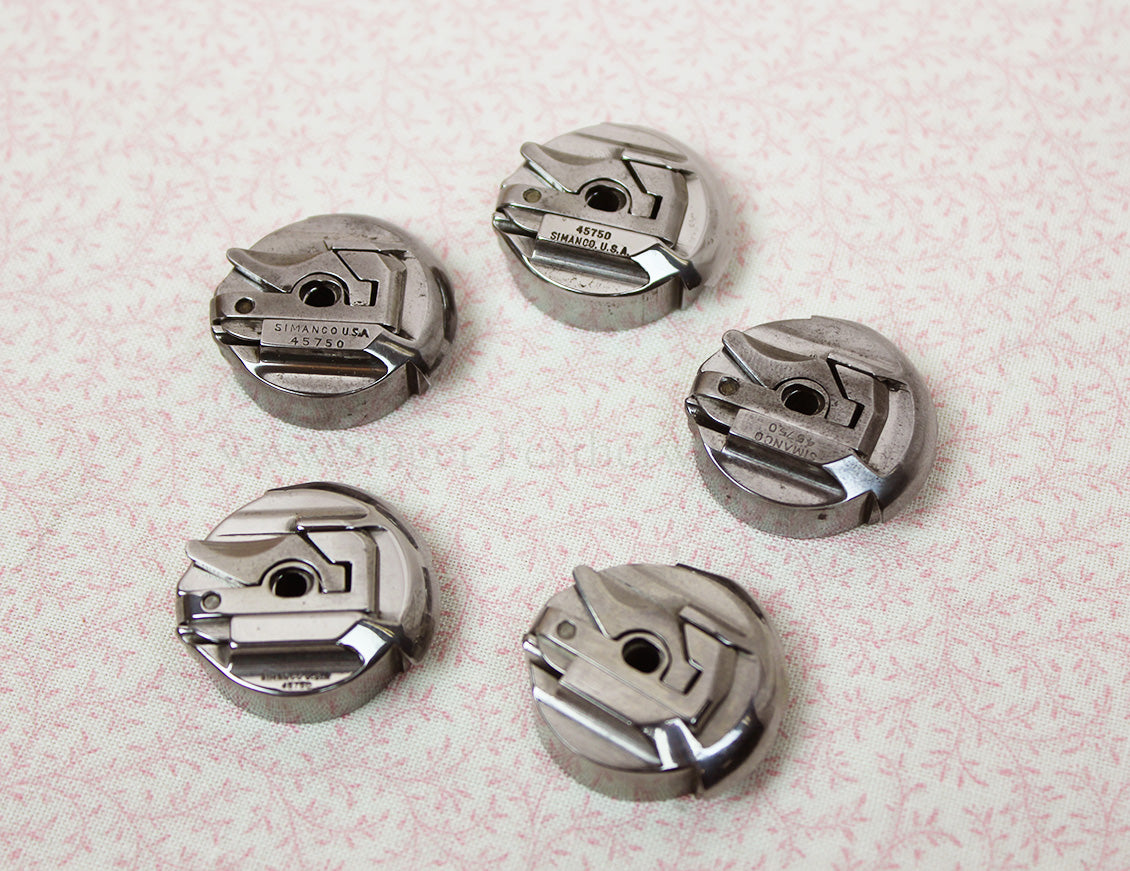
Bobbin Case History of the Singer Featherweight 221 and 222
Many bobbin cases look alike, but here you can learn more of their history with the Singer Featherweight 221 and 222.
Read More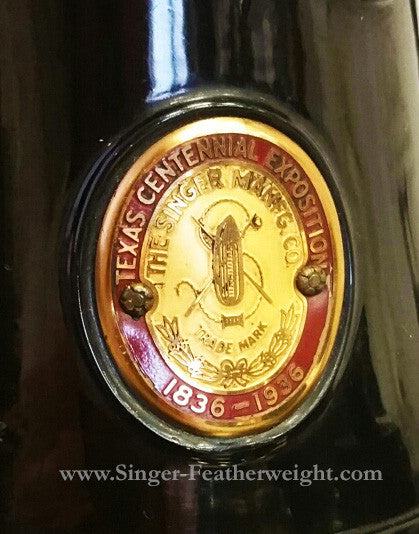
Singer Featherweight Texas Centennial - 1936
The Texas Centennial 1836 - 1936 badged Featherweight is probably the rarest of the rare... the most scarce Featherweight to find because of the short time period for which they were available - just over 5 months. Moreover, this particular badge is the only "Texas" Featherweight badge official...
Read More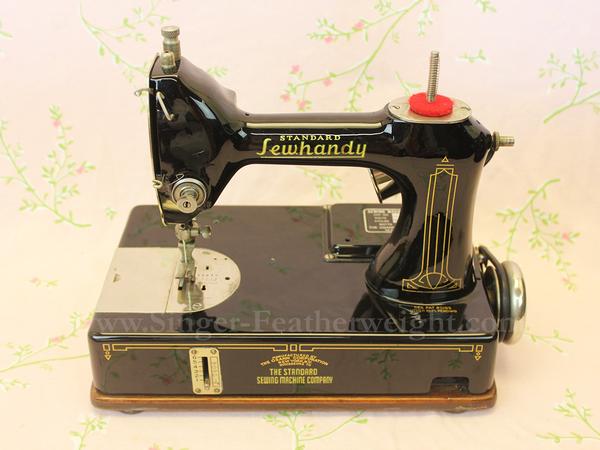
The Standard Sewhandy, General Electric & Early Featherweight History
Singer "Featherweight" history actually begins before Singer and before 1933 & 1934 (when Singer debuted their model 221 at the Chicago World's Fair). The "Featherweight" name and style really had its beginnings in 1928, when the Standard Sewing Machine Company marketed the first "Featherwei...
Read More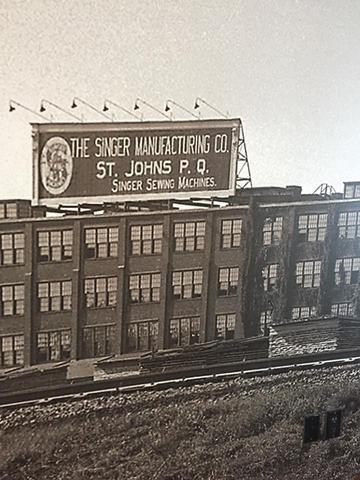
Singer Sewing at the St. John's Factory, Quebec, Canada
Today we are featuring a guest article by Lynne McFern of Ste-Catherine, Quebec, Canada. After acquiring a Singer Featherweight and rekindling a link to her past, Lynne was inspired to learn more about the history of her machines. This is her story... *******************************************...
Read More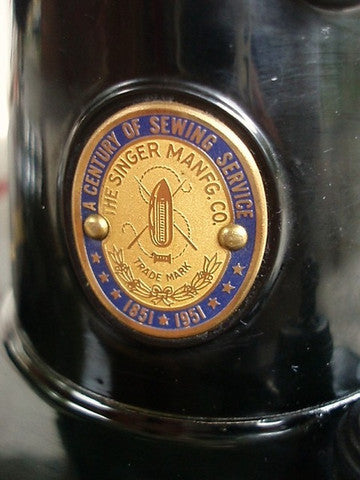
Singer Featherweight Centennial 1851-1951
Singer, rightfully proud of its company history, celebrated its centenary in 1951 by giving all machines commissioned for that year a special commemorative badge. It was the standard Singer emblem of the time but with the inscription "A Century of Sewing Service 1851-1951" around the outside o...
Read MoreThe Free-Arm Featherweight 222K and How It Differs From the Featherweight 221
The Singer Featherweight 222K Sewing Machine (and the difference between a Singer 221 model) UPDATE: Click here for a side-by-side comparison images and reference page. Approximately 100,000 222K Featherweights were made worldwide and are one of the best sewing machines ever made. Somet...
Read More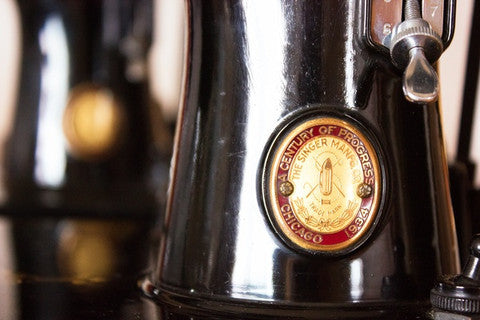
The Singer Featherweight 221 Model Sewing Machine first debuted at the Chicago World’s Fair in 1934. This Exposition was held from May to November 1933 and May to October 1934 with the motto “Science Finds, Industry Applies, Man Conforms”. The official theme was “A Century of Progress” commemor...
Read More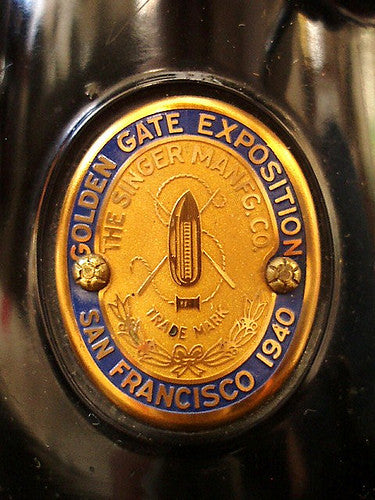
Singer Featherweight San Francisco 1939-1940
Economists know there is a distinctive difference between rare and scarce. One is limited quantities and the other is limited available resources with which to obtain ... so in all honesty, this Singer Featherweight falls into both categories! At the 1939 and 1940 World's Fair held ...
Read More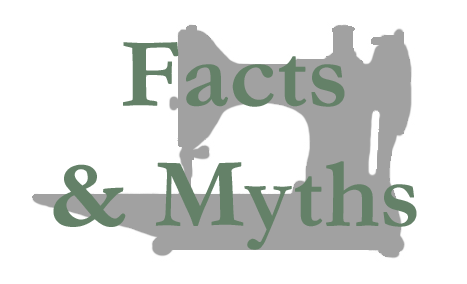
Singer Featherweight Factsand Some Myths Exposed by Graham Forsdyke Singer Featherweight machines were produced in black, beige/tan and white/green (what the company officially called Pale Turquoise). There were no red, blue or any other colour machines although many have been repainted in lat...
Read More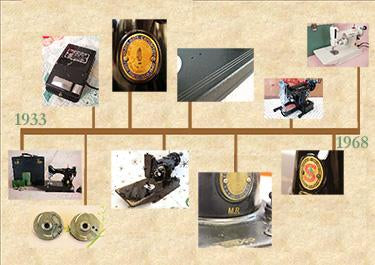
Timeline History of the Singer Featherweight
From 1933 to 1969, this timeline provides a detailed history of the Singer Featherweight 221, 222 and all the details surrounding this Singer Sewing Machine. 1933:On October 3, 1933, Singer commissioned the first batch of 10,000 model 221 sewing machines, marketing them as the Singer Featherwei...
Read More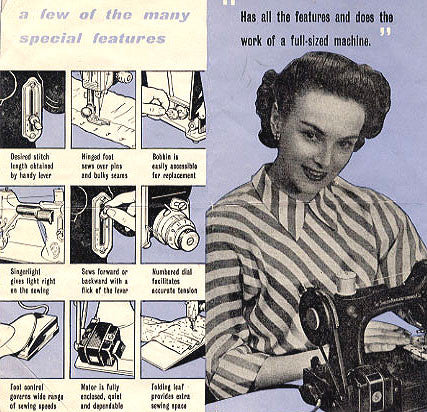
Singer Featherweight Advertisements
There were many Singer Featherweight advertisements over the years and we hope to share quite a few of those with you here. If you happen to have a unique one that you do not see listed, please contact us, because we would like to feature it for all to enjoy in the Featherweight Community. Singer...
Read More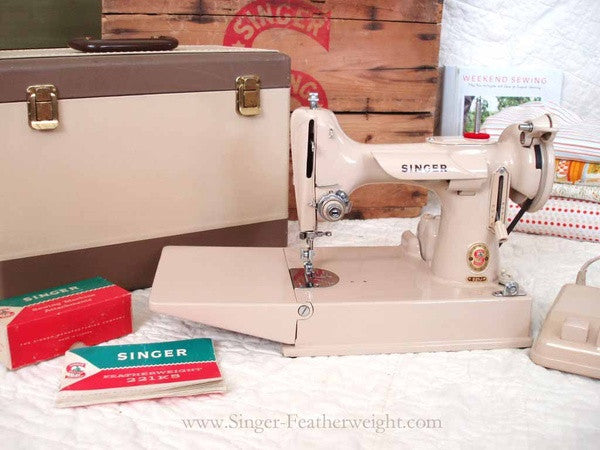
The Tan Featherweight 221J or 221K
This is one of the first "colored" Featherweights (besides "Pale Turquoise") that Singer produced besides the traditional black Featherweight. It has a few notable differences which will be noted in the photographs below. Mechanically, the tan Featherweight is identical to the black. The '...
Read More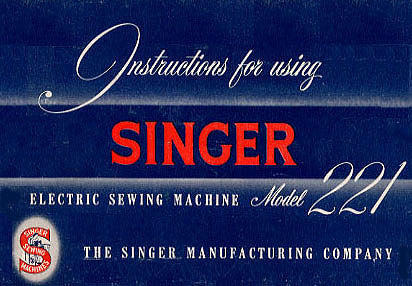
The Various Featherweight Manuals Throughout the years that Featherweights were produced, the Singer company produced some manual variations. The principal handbooks given with machines are shown here. Above Left: This manual is the standard handbook supplied with US-built Featherweigh...
Read More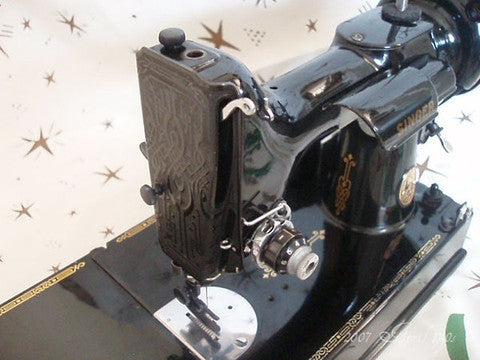
Singer Featherweight Blackside Finish
The “Blackside Featherweight” can be an obscure find unless you know what to look for, because it may just look like a regular Featherweight with only a few darker looking parts. However, there are some important distinctions, so you don't want to presume that just because a Featherweight has a ...
Read More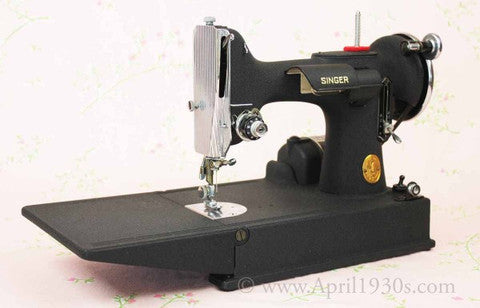
Singer Wrinkle (Crinkle) Featherweight 221
Serial Number: AF589*** indicates commission date of August 15, 1940 This uniquely finished Featherweight has been most commonly referred to as the “Crinkle” Featherweight or sometimes called a “Matte Finish” Featherweight. However, we would like to dispel that descriptive adjective with th...
Read More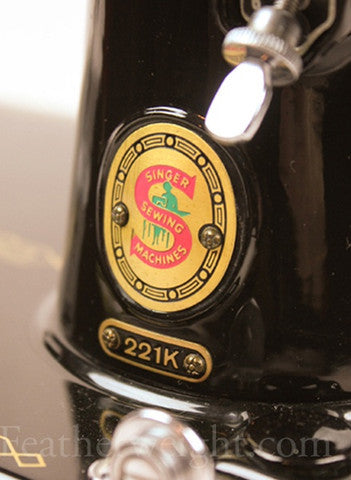
Singer Featherweight Red 'S' Badge
The Red S Badged Featherweight "I hear a lot about the Red 'S' Featherweight - what is it? and what does it look like?"This is a question we receive once in awhile and it is a good one!A Red 'S' Badge on a Singer Featherweight A Red 'S' badged black Featherweight has become one more novelty for ...
Read More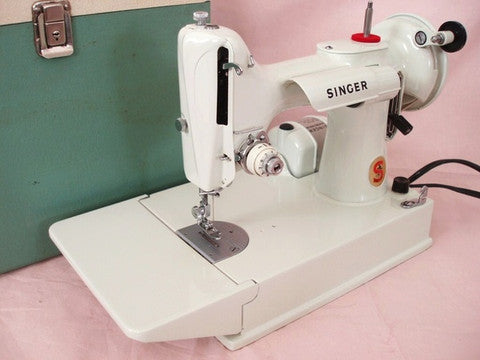
Produced from the mid to late 1960's in Kilbowie Scotland, this machine was something fresh and new to the Singer Featherweight market. The official Singer color was called "Pale Turquoise", but the machine was often times more white or pale green in appearance depending on the casting light. Fo...
Read More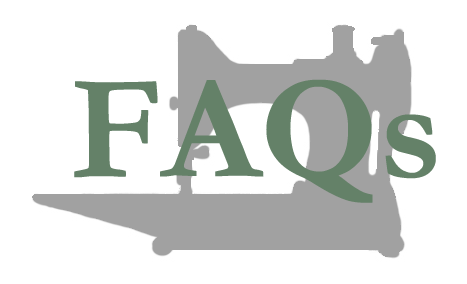
A collection of frequently asked questions surrounding the Singer Featherweight... from "Is my machine a Featherweight?" to "What is my Featherweight worth?" to "I just got a Featherweight, now what do I do?"... and MORE! This set of questions will be a great place to begin if you are wanting to...
Read More
